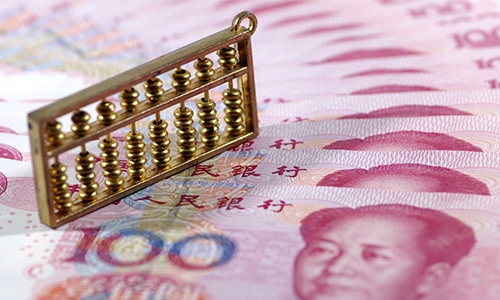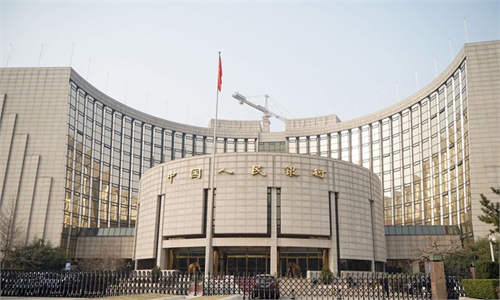
Renminbi Photo: VCG
The offshore Chinese yuan broke the so-called psychological threshold of 7 to the US dollar on Thursday, but it is just a "technical indicator" as long as the regulators take measures to keep cross-border capital flows and the currency market stable, experts told the Global Times.
The offshore yuan weakened past 7 per US dollar at around 18:40 pm on Thursday. As of press time, the currency stood at 7.0005 against the greenback.
This is the first time that offshore yuan has dropped past 7 per dollar since 2020. The number is also a kind of psychological barrier for the market and there is always a lot of discussion among economic observers each time the yuan edges close to the level.
On Thursday, the yuan's central parity exchange rate against the US dollar stood at 6.9101, up 15 basis points compared with the previous day.
The yuan's depreciation has also been spurred by the US dollar's rally, as higher-than-expected US inflation statistics triggered market anticipation of another rate hike by the US Federal Reserve. The Fed is expected to announce rate decisions next week.
The US has been in a cycle of interest rate hikes since March as the country tries to rein in soaring inflation. The trend has dampened many overseas currencies and fueled worries about possible capital outflows.
In China, such worries are milder because of capital flow management, but they still exist, particularly as the breaking of the 7 yuan per dollar psychological level might trigger expectations of further depreciation, a report by the South China Morning Post cited an expert as saying.
However, Chen Jia, an independent research fellow on international strategy, told the Global Times that discussions about the 7-to-1 barrier should just be a flurry of market sentiment. In fact, the level is just a technical indicator and has limited actual influence as long as regulators keep the currency market stable.
"Seen from a historical perspective, as long as China's economy keeps resilient, trade growth maintains a high level and China further consolidates its world factory position and supply chain security, the yuan will eventually return to a balanced level even if it breaks the 7 per dollar level in the short term," Chen told the Global Times.
Chen also pointed out several factors that support the stability of the yuan, including the fact that the yuan has appreciated against some major currencies, and that cross-border capital flows have remained stable.
The yuan has strengthened by more than 3 percent against the euro this year, for instance.



